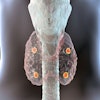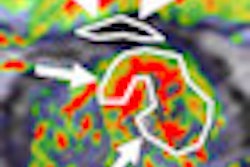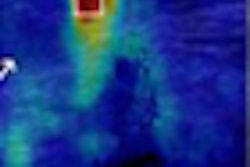As it had proposed in December, the U.S. Centers for Medicare and Medicaid Services (CMS) has removed a national noncoverage determination for radiopharmaceuticals with oncology PET imaging. However, CMS was not swayed by lobbying efforts to also include cardiac and neurological applications in the decision.
In its final decision memo Thursday, CMS said that unless there is a specific national coverage determination, local Medicare Administrative Contractors (MACs) may determine coverage within their respective jurisdictions for oncologic imaging. The change does not include screening uses of PET.
"The effect of this decision is to remove the national noncoverage for FDA-approved labeled oncologic uses of radiopharmaceuticals that are not more specifically determined nationally," CMS wrote. "Thus, this decision does not change coverage for any use of PET using radiopharmaceuticals FDG (2-deoxy-2-[F-18] fluoro-D-Glucose (fluorodeoxyglucose)), NaF-18 (fluorine-18 labeled sodium fluoride), ammonia N-13, or rubidium-82 (Rb-82)."
CMS noted that this decision does not prevent it from determining national coverage for any uses of any radiopharmaceuticals in the future, and if such determinations are made, a future determination would supersede local contractor determination.
In a statement, the Medical Imaging and Technology Alliance (MITA) said that the removal will allow local Medicare carriers to determine coverage, and allow physicians and patients to benefit from these tools. The alliance said it is disappointed, however, that broader PET coverage decisions for cardiac and neurological applications were not included in the decision. The alliance had sought local coverage of all PET tracers.
"PET procedures inform medical decision-making in the specialties of cardiology and neurology, as well as oncology," MITA Executive Director Gail Rodriguez said in a statement. "We are disappointed that these applications were not included in the decision memorandum and believe that the consideration of coverage for PET tracers should be no different than for other items and services."
In its decision, CMS had expressed concern that guidelines for PET in cardiology were smaller and reflected a narrow spectrum of sponsors and developers.
"PET was generally one of many diagnostic modalities included in those guidelines," CMS wrote. "Though we are not delegating cardiac PET imaging to the MACs, we appreciate the public comments on this topic and encourage the development of a more robust body of guidelines on this topic.
However, MITA said that well-vetted, peer-reviewed, and evidence-based professional society guidelines are in place for the appropriate utilization of cardiac PET scans.
"While MITA is encouraged by this decision, we are hopeful CMS will continue to evaluate the preponderance of evidence that guides physician utilization of PET tracers in specialties outside of oncology in order to avoid lengthy, bureaucratic reviews of items and services that are rapidly becoming the standard of care," Rodriguez said.
CMS said in its statement that it is opening a national coverage analysis, Beta Amyloid Positron Emission Tomography in Dementia and Neurodegenerative Disease, to separately consider this issue. The agency said its search for a body of guidelines on PET imaging for topics beyond oncology and cardiology was not productive.





















